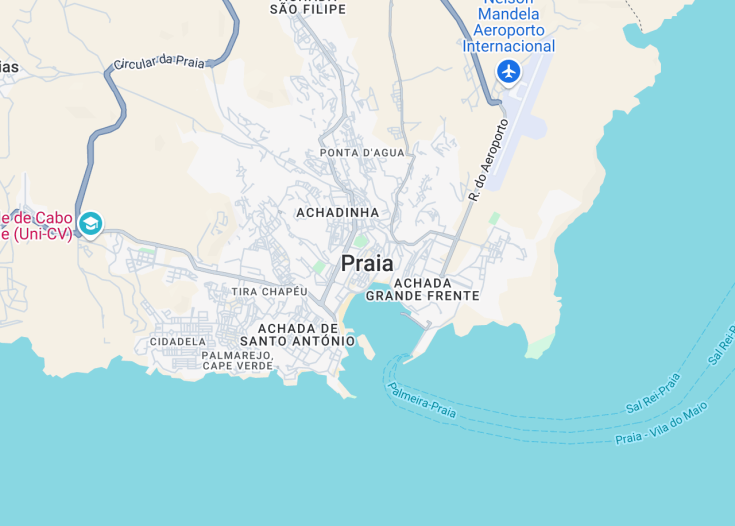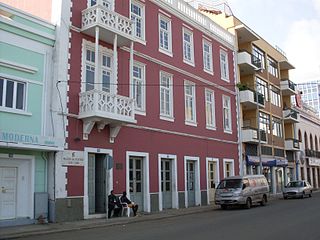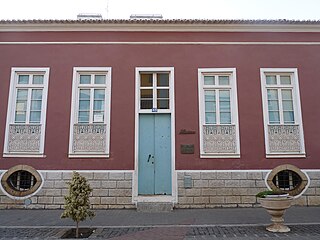Praia, the charming capital of Cape Verde, is set on the southern coast of Santiago island, offering a blend of Creole Portuguese-African culture and colonial history. This lively city is not just the administrative hub but also the beating heart of Cape Verdean identity. Visitors can explore colorful markets, picturesque neighborhoods like Plateau and Várzea, and soak in the vibrant music scene. The surrounding beaches provide a perfect backdrop for relaxation and water sports, rounding out Praia as an ideal destination for both cultural immersion and seaside leisure.
Before traveling to Praia, ensure to experience its vibrant music scene by attending a live performance, which vividly captures the soul of Cape Verde.
Consider timing your visit with local cultural festivals like Kriol Jazz Festival to truly immerse in the infectious energy and spirit of the city.
Top things to do & see in Praia
Select the following sights and activities to discover best tickets and tours available in Praia.
Praia: The Heartbeat of Cape Verde
| Country | Cape Verde |
| Time in Praia | GMT-1 |
| Language spoken | Portuguese |
| Population | 160,000 (World Population Review, 2023) |
| Currency | Cape Verdean Escudo (CVE) |
| Airports | Nelson Mandela International Airport (3 mi / 5 km). |
Praia, the capital city of Cape Verde, is a cradle of cultural diversity and history, blended within its urban architecture and the daily lives of its inhabitants. The city sits on the southern coast of Santiago Island and serves as the economic, political, and cultural hub of the nation. Praia’s history is marked by colonization and the transatlantic slave trade, remnants of which are evident in its old quarter, Cidade Velha, a UNESCO World Heritage Site. The city’s name, which means “beach” in Portuguese, is fitting as it is dotted with picturesque beaches like Quebra Canela and Prainha, popular among tourists and locals alike.
As the largest urban center in Cape Verde, Praia is bustling with activities. Its markets, especially Sucupira Market, are lively and colorful, offering everything from traditional African textiles to local handicrafts. The city also hosts a variety of festivals throughout the year, celebrating Cape Verdean music genres like Morna and Funaná, reflecting the city’s rich cultural tapestry. Additionally, Praia is an educational center, hosting the University of Cape Verde, pivotal in nurturing the nation’s future leaders.
The modern part of Praia is continuously expanding, with new buildings providing a stark contrast to the traditional Portuguese colonial architecture found in the older parts of the city. This juxtaposition visually represents the bridge between Praia’s historical past and its development-driven future. Despite modern advancements, Praia still holds tightly to its cultural roots, exemplified through its music, dance, and public gatherings.
Being the seat of government for the Republic of Cape Verde, Praia hosts several foreign embassies and consulates, increasing its significance in international relations within the west African region. The city’s strategic geographical location has made it a frequent stopover for shipping and airline routes crossing the Atlantic.
Praia’s development, historical significance, and vibrant cultural scene make it an essential destination for anyone visiting Cape Verde, offering a comprehensive glimpse into the island nation’s soul.
Where is Praia?
Praia is located on the southern tip of Santiago Island in Cape Verde, overlooking the expansive Atlantic Ocean.
Distances:
| Route | Distance by car | Time by car |
|---|---|---|
| Mindelo to Praia | 171 mi | 3 hours 30 mins |
| Assomada to Praia | 23 mi | 40 mins |
| Porto Novo to Praia | 183 mi | 3 hours 45 mins |
What is Praia famous for?
Praia is renowned for its historical significance, diverse culture, and beautiful beaches which attract tourists from around the globe seeking to experience its unique charm and historical depth.
History
Pre-Colonial Period (Before 1460)
The area now known as Praia, Cape Verde, was originally uninhabited, devoid of any major human settlement prior to the arrival of European explorers. The archipelago of Cape Verde is a group of islands in the central Atlantic Ocean, largely formed due to volcanic activity. The uninhabited state persisted until the 15th century.
The Age of Discovery (1460-1580)
Praia’s history began markedly when the Portuguese explorers discovered the Cape Verde Islands in 1460. Praia, situated on Santiago Island, was founded in the late 1500s as a small settlement. It initially served as a stopover point for Portuguese maritime explorations and trade routes across the Atlantic. The port’s strategic location enabled it as an essential point for the re-supplying of ships and accumulation of resources.
Colonial Growth and Slave Trade (1580-1876)
Throughout the 16th to 19th centuries, Praia experienced growth as a transit point in the transatlantic slave trade. Its port saw thousands of African slaves being transported to the Americas, making it a significant, albeit grim, part of the city’s historical fabric. This period saw increased fortifications and the establishment of colonial administrative buildings.
Path to Independence (1876-1975)
The abolition of the slave trade in the late 19th century led to a downturn in Praia’s fortune. The city, however, continued to serve as a significant port in the archipelago. By the mid-20th century, movements towards independence from Portuguese rule began to gain momentum across Cape Verde. Praia became a hotspot for anti-colonial activism led by Amílcar Cabral and the African Party for the Independence of Guinea and Cape Verde (PAIGC).
Modern Era (1975-Present)
Following Cape Verde’s independence in 1975, Praia was designated the capital due to its historical importance and strategic location. The city has since undergone rapid modernization and urbanization, developing into a bustling metropolis that is the cultural, economic, and political heart of Cape Verde. Presently, Praia is a vibrant city reflecting a mix of its colonial past and modern African dynamism.
Visit Praia
What to see and do in Praia
Explore the rich layers of history and culture in Praia, the capital city of Cape Verde. Wander through the historic Plateau district, with its cobbled streets lined with colonial architecture, quaint churches, and bustling markets. Visit the Presidential Palace, and soak in the view of the entire city from the hilltop fortifications of Cidade Velha, a UNESCO World Heritage Site.
- Explore the Ethnographic Museum to understand the cultural heritage of Cape Verde.
- Relax on the nearby beaches such as Praia de Quebra Canela, popular for its golden sands and clear waters.
- Experience the vibrant local music scene by catching a live performance of traditional Funaná and Morna music.
Festive Praia
Praia hosts various cultural and music festivals throughout the year, celebrating its rich heritage and dynamic community spirit. Notable events include the Kriol Jazz Festival, held annually in April, showcasing local and international artists, and the Gamboa Music Festival in May, which is one of the largest music festivals in Cape Verde, featuring performances from a wide array of genres.
Best time to visit Praia
For optimal weather, visit Praia between November and June, when the climate is drier and cooler. This period avoids the rainy season and has pleasant temperatures ideal for exploring the city and surrounding landscapes.
Is Praia worth visiting?
Praia offers a unique blend of African, Brazilian, and Portuguese influences, visible in its architecture, music, and cuisine, making it a fascinating metropolis to explore. With its historical significance, vibrant cultural scene, and beautiful natural surroundings, Praia is certainly worth a visit for those looking to experience a different rhythm and pace in one of the most culturally rich capitals in West Africa.
















